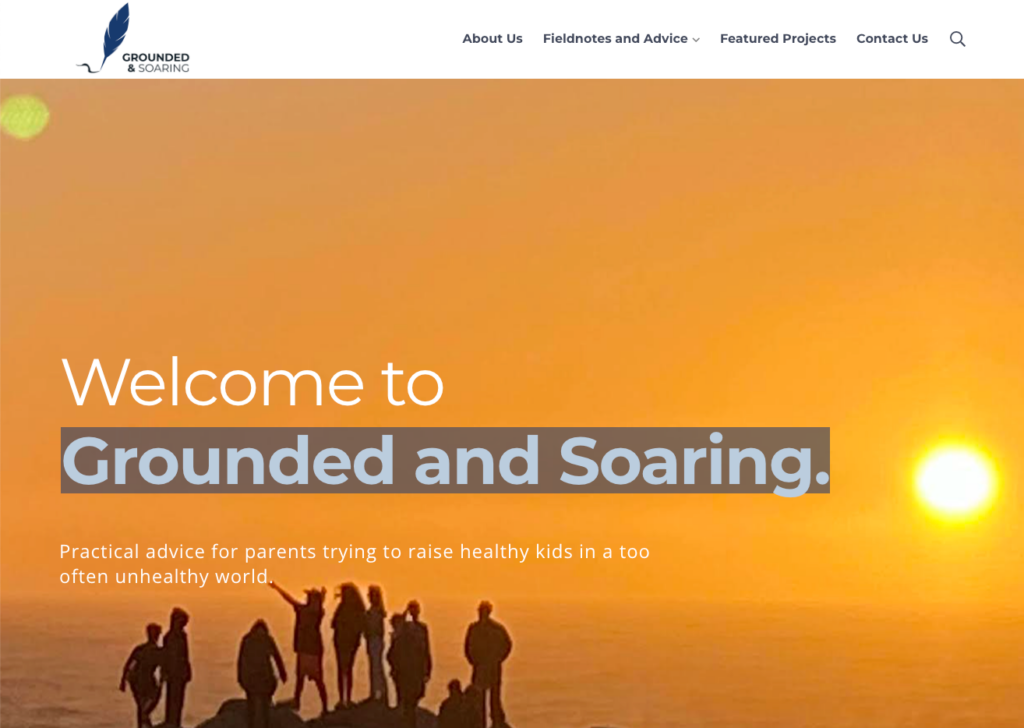This is a guest post written by Terry Dubow, Director of Communications and Story at Marin Montessori School.
In the late summer of 2021, I arrived at a lovely campus in Marin, California, pretty excited to trade the winters of Cleveland, Ohio for the views of San Francisco, Sausalito, and Mount Tamalpais.
It wasn’t all sunshine, of course. Marin Montessori School (Toddler-Ninth Grade) has a stellar reputation for early childhood education. Unfortunately, it’s also had a long history of retention issues in the older grades, and my job was, in many ways, designed to help turn them around.
It was clear that the families who were leaving generally did so not because of rampant dissatisfaction with the program but because of what one parent referred to as the Trolley Problem.
His point: As kids get older, it gets harder to actively choose a non-traditional education. It’s one thing for parents of young children to choose Montessori education because they believe in its approach and how it harnesses curiosity and intrinsic motivation and inspires independence and deep learning.
It’s another to bet that older kids — elementary and junior high — are getting what they need to be well prepared for high school and beyond. After all, Montessori education looks, acts, and feels different from the one the parents experienced themselves — and the one they hear about from neighbors and friends on sidelines of soccer games or the food station at cocktail parties.
In this dad’s description of the parent experience, we heard our school’s Problem to be Solved (PTBS). Everything we do must center on that problem and our solution.
Grounded and Soaring
Identifying the institutional PTBS has proved to be an invaluable clarifying step in devising communications and marketing strategies. It’s the essential pre-work for any kind of tactical campaign or messaging. It sets the objective. The strategy follows and, from the strategy, the tactics.
Our strategy to address our particular PTBS has two prongs. First, the academic leaders are working on improving the student progress reporting tools and practices so parents have a better understanding of the stellar education their children are experiencing. That’s largely out of my domain.
The second prong, though, is a school-wide effort to adopt an audience-centered approach that uses story, not explanation to inspire confidence and keep parents informed, impressed, and loyal.
In January, we launched Grounded and Soaring, a second website for our school with the express purpose of housing and sharing content that offers “practical advice for parents trying to raise healthy kids in a too-often unhealthy world.”
As a pure content site, it — and the process of developing it — might prove a useful test for how one small school is trying to use an audience-centered approach to address a persistent institutional threat.
The Steps We Took
- The first choice we made was to adopt an audience-centered rather than institution-centered approach. That means we resist the urge to focus on the distinctions that we think make us special and instead identify the intersection between what families are worried about and what we distinctively offer.
- We listened to parents, teachers, admissions officers, level directors, and others to identify parental anxieties and aspirations that function, essentially, as our assignment editor — meaning, they guide the content we create.
- We built the site on a WordPress platform with a unique URL and a visual identity that echoed but did not mimic our school’s. We wanted the site to have distance from the school so the content can behave not as promotion but as help. As I mentioned to Brendan, we didn’t worry about SEO because our Problem to Be Solved is retention, not recruitment.
- Because no school’s parents are monolithic, we chose to create content about a variety of topics and in a variety of modes. Some parents are concerned about toilet training; others are worried about college admissions. Some listen to podcasts; some read blogs on the train to work. We want to position ourselves as experts and allies to all of them.
- We built institutional buy-in and support. Teachers have their own anxieties and aspirations; like all of us, they want to be valued and understood, and so we presented the site as a sincere opportunity to shed light on their life’s work and to lift them up as experts and allies.
- We made it easy to participate. I offered to interview them on the podcast, write an article about their work, or if they wanted to write it, I would be a kind and clear editor.
- The Head of School fully committed. He’s all in. He promotes it in his weekly note, at admissions events, in his meetings with families. Same with the director of admissions. We’re building drip marketing campaigns with the content.
- The communications office has essentially become a newsroom that seeks, crafts, and distributes stories that all are tethered to this central idea of raising healthy kids in an unhealthy world.
Three important notes:
- We have a communications office of one. Me. I handle both websites, daily communication, the calendar, social media — all of it. I also host, edit, and post the podcast and most of the videos. I can do all of this because we have solid systems and strong relationships. We’re a healthy school.
- This project is profoundly inexpensive. I’ve worked at big schools with big budgets for communications. This ain’t one of them. We created this site for what I used to spend on direct mail for an Open House. Probably less.
- It’s important to emphasize that we don’t invent anxieties or manipulate people into buying something they don’t need like our friends at Ford do in the ad below. This kind of message targets the audience’s vulnerabilities or pain points (men’s fears of weakness and uselessness) and uses the truck as the solution. The problem, of course, is that this is mere symbolism, and more importantly, it is a form of exploitation.
So Far, So Good
So far, the reviews have been very positive. From the Board to parents in carline to the cold-hard analytics, we’re finding an audience hungry for help in their efforts to raise healthy kids in a too-often unhealthy world. We have all kinds of ideas for how the site will evolve and how we will use it in our retention -- and, eventually, our recruitment efforts.
What may be useful to you, though, is the recognition that for the price of a half-page ad in your city’s flagship magazine, you can build a platform to tell stories that will meet families where they are and position your school to be the expert and ally they’ve been looking for. And it makes your work more generative, satisfying, and consequential.

